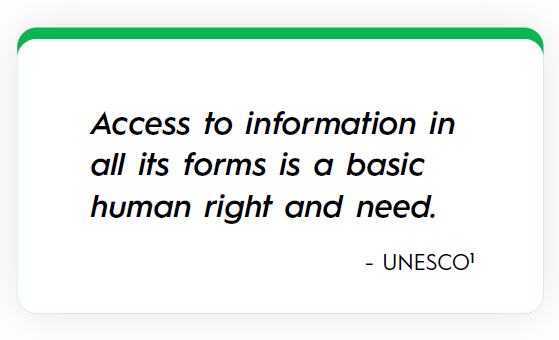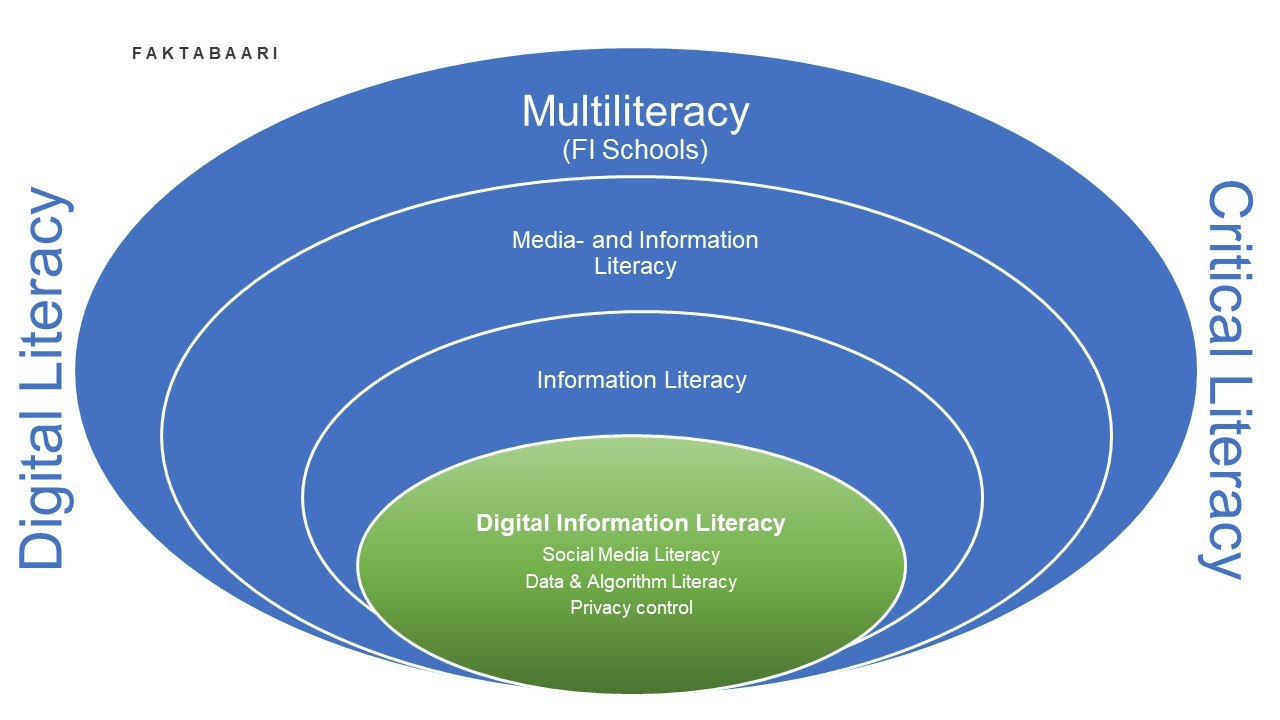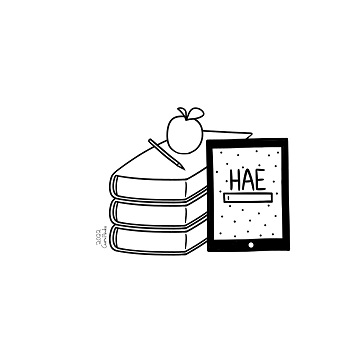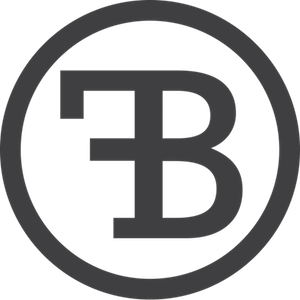
The rapid development of the digital online environment has profoundly changed the way we search, analyse, use, and share information.
Powerful search engines can find millions of hits for our search in a nanosecond. The real online challenge is to sort out which information is useful and meets our initial information need. In addition, the search results are very individual and lack transparency. Third parties can influence the order in which the results are shown, for example by technical coding or by buying visibility from the search engine platforms. Unfortunately, the quality and breadth of sources and relevant information in the top search results has diminished as more and more commercial pages find their way on top of the search results. Simultaneously, the sheer volume of mis- and disinformation has increased in recent years.
We need human critical thinking to evaluate the fit of the content that the algorithms are proposing for us. To do this, it is vital to develop our digital information literacy skills.
Literacy definitions
The terminology concerning various online literacies is still in the process of being established. Currently, there are several slightly overlapping digital literacy approaches in the literature. The European Commission expert group tackling disinformation and promoting digital literacy chose to use the term “Digital Literacy”. Other relatively common terms are “Critical Literacy” and “Internet Literacy”. The online environment has evolved at an extraordinary pace, and new terms related to understanding the online environment appear almost weekly. Here we introduce a few literacy terms relevant to the Nordis project.
Critical literacy refers to an individual’s ability to seek information, evaluate, source and interpret texts, and use the overall picture formed by texts in decision making and apply what they have learned when engaging with different communities. (2)

Multiliteracy
The term multiliteracy used in the Finnish national core curriculum is a good way to describe the challenges and requirements the modern communication environment imposes on children and adolescents. In addition to traditional written text, they are expected to interpret and evaluate other types of communication and media texts and to have the competence to handle a great variety of media and communication channels.
The Finnish curriculum describes multiliteracy as follows: “The pupils need multiliteracy in order to interpret the world around them and to perceive its cultural diversity. Multiliteracy means abilities to obtain, combine, modify, produce, present and evaluate information in different modes, in different contexts and situations, and by using various tools. Multiliteracy supports the development of critical thinking and learning skills.” (3)

Media and Information Literacy
UNESCO promotes the development of Media and Information Literacy (MIL) for all to enable people’s ability to think critically and click wisely (4).
MIL can be defined as an interrelated set of competencies that help people to maximise advantages and minimise harm in the new information, digital and communication landscapes. Media and information literacy covers competencies that enable people to critically and effectively engage with information, other forms of content, the institutions that facilitate information and diverse types of content, and the discerning use of digital technologies. Capacities in these areas are indispensable for all citizens regardless of their ages or backgrounds.
According to Unesco’s approach, response to disinformation and misinformation requires a combination of critical information, media, and digital competencies, i.e., media and information literacy (MIL).
Information Literacy
One aspect of multiliteracy is information literacy– the ability to find and constructively critically analyse and understand different texts, messages and news and their contexts (5). According to Suvi Alaranta (6), the information literacy can be defined as an ability to search for, acquire, evaluate and use information:
“Information literacy consists of identifying information needs, managing sources of information, accessing and using information, assessing information and making use of it - it progresses from information needs to information end-use.”
Susie Andretta (7) describes an information literate person as having the ability to:
- Determine the extent of information needed
- Access the required information effectively and efficiently
- Evaluate information and its sources critically and incorporate selected information into his/her knowledge base and value system
- Use information effectively to accomplish a specific purpose
- Understand many of the economic, legal, and social issues surrounding the use of information, and access and use information ethically and legally
Information literacy covers all the information available to an individual in its various forms - for example, printed products, digital content, data, images and speech. Information literacy is a part of multiple literacies and is closely linked to digital, academic, media and information literacy.

Digital Information Literacy
As a fact-checking organization, Finnish Faktabaari is particularly interested in promoting Digital information literacy, which can be defined as a set of skills and abilities which everyone needs to undertake information-related tasks:
Digital information literacy is the ability to access, manage, understand, integrate, communicate, evaluate, create, and disseminate information safely and appropriately through digital technologies.
It includes competences that are variously referred to as information literacy and media literacy, computer, and ICT literacy but also an ability to understand the functioning of the digital information landscape at large.
Digital Information Literacy involves a dimension of active and civic engagement with the digital world and promotes active citizenship.
Digital information literacy allows us to understand power and the need for the accountability of numerous stakeholders who create technologies, platforms, and content for us in the digital age. Being able to critically evaluate the multiple sources of information empowers us as citizens to reach and express informed views and to engage with society from an informed point of view.
According Manchester University Democracy@Risk (9) report digital information literacy is “a promising pathway for empowering citizens and cultivating mass-level resilience to misinformation and harmful online practices - however, the slow pace of change and the scale of cognitive demands placed on citizens means that it should be treated as only one part of a broader, multi-layered and multi-actor strategy for tackling online harms”.
The NORDIS (10) project brings together fact-checking experts, researchers, journalists, and pedagogues to provide digital information literacy support to citizens to resist the perils of mis- and disinformation.
Sources:
(1) UNESCO https://en.unesco.org/sites/default/files/mil_curriculum_second_edition_summary_en.pdf
(2) Opetushallitus, Perusopetuksen opetussuunnitelman perusteet: https://eperusteet.opintopolku.fi/#/fi/opetussuunnitelma/832740/perusopetus%2Ftiedot/vuosiluokkakokonaisuus/833041
(3) UNESCO (2022) About Media and Information Literacy https://www.unesco.org/en/communication-information/media-information-literacy/about
(4) Kivinen et al (2020) Informaatiolukutaito-opas. Avoin yhteiskunta/Faktabaari. https://faktabaari.fi/assets/Informaatiolukutaito-opas_Faktabaari_EDU.pdf
(5) Alaranta, Suvi, (2018) Informaatiolukutaito: määritelmät ja käyttötarkoitus. https://www.theseus.fi/bitstream/handle/10024/159543/ Alaranta_Suvi.pdf?sequence=1&isAllowed=y
(6) Susie Andretta (2005). Information Literacy: A Practitioners Guide
(7) Osborne et al. (2020) https://sciedandmisinfo.sites.stanford.edu/sites/g/files/sbiybj25316/files/media/file/science_education_in_an_age_of_misinformation.pdf
(8) Faktabaarihttps://faktabaari.fi/mita/
(9) Democracy@Risk Report (2021), Manchester University https://www.manchester.ac.uk/discover/news/democracyrisk---report-and-launch-event/
(10) EDMO Nordis – Sitra https://www.sitra.fi/en/projects/edmo-nordis-and-digital-information-literacy/
Kari Kivinen, PhD, is an Education outreach expert at EUIPO. He has over 30 years of experience in international education. Since 2017 he has led the pedagogical development work at Faktabaari EDU digital information literacy service building on fact-checking methodology and co-authored and piloted the learning materials with fellow teachers around Finland and abroad. He is a member of the Commission expert group on tackling disinformation and promoting digital education. The author works for EUIPO and agency of the EU but the views expressed are purely personal and cannot be taken as being official statements of either the EU or the EUIPO.
Artwork: Lumi Pönkä
Download the Digital Information Literacy Guide (PDF).

